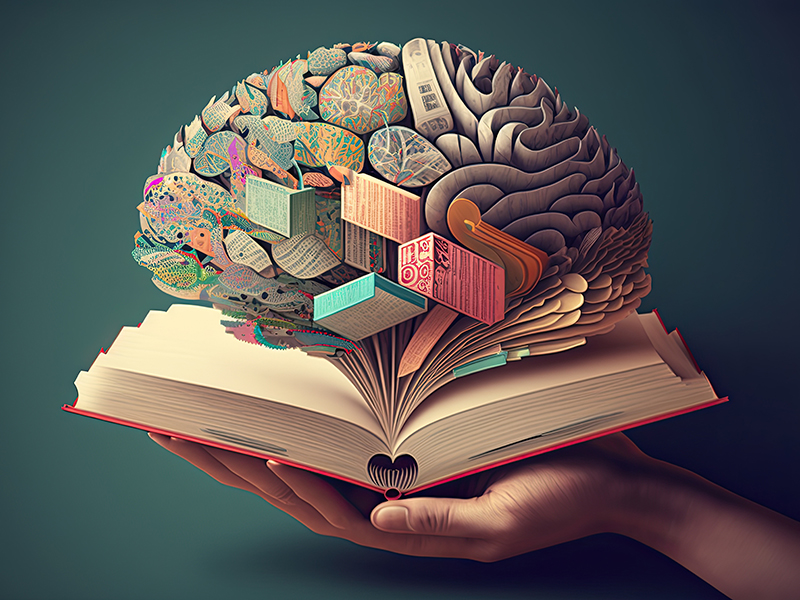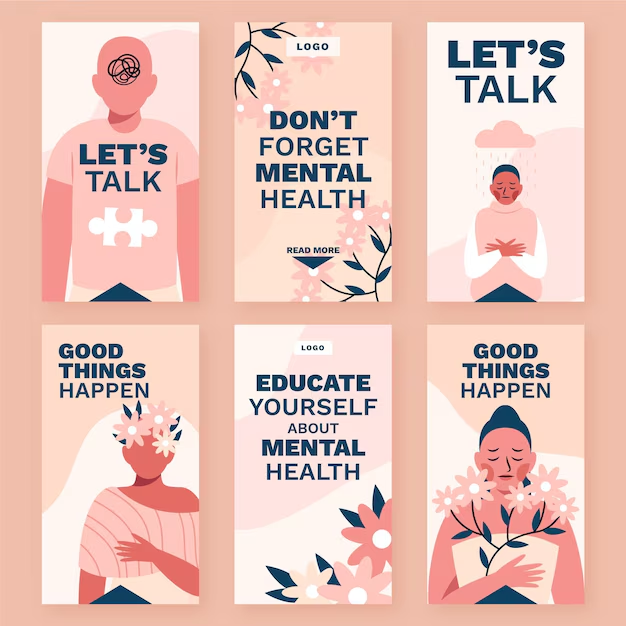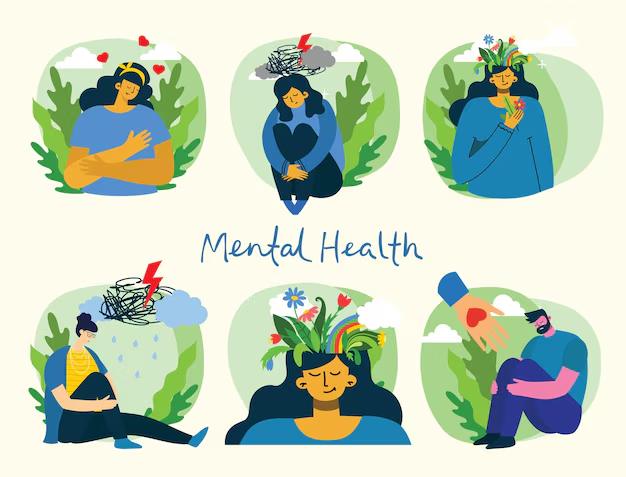Table of Contents

Introduction
Opening the Healing Gateway with Mental Health Storytelling
Storytelling is a timeless art, a universal language that has been an integral part of human existence since the dawn of civilization. It serves as a vessel that carries within it the essence of human experience, providing solace, education, and healing. Picture a scenario where a woman, who has been grappling with the tentacles of depression for years, finds an unexpected ally in the art of sharing her tale through a podcast.
Her narrative resonates with the hearts of many, and she receives messages from her listeners, all strangers bound by a shared battle, who express their gratitude for her candidness, saying, “You’ve given me the strength to seek help.” This blog is an in-depth exploration of the profound impact that recounting our mental health journeys can have, not just on ourselves but also on the lives of those who have the privilege of hearing them. Whether we choose to scribble our innermost thoughts in a diary tucked away in a drawer, or proclaim our battles from the digital rooftops, stories possess an undeniable power to heal and connect.
The Science Behind Storytelling and Mental Health
The Neurobiological Enchantment of Storytelling
Storytelling is not merely a passive act of recounting events; it is a dynamic process that engages the listener and the teller in a symphony of neural activity. Researchers have found that when we engage in storytelling, our brains release oxytocin, a hormone that is often referred to as the “bonding hormone.” This chemical reaction plays a significant role in fostering empathy and emotional connections. Moreover, studies utilizing MRI technology have demonstrated that the act of sharing a story stimulates neural pathways associated with empathy, emotional processing, and memory. This suggests that storytelling has a profound influence on our mental well-being and our ability to connect with others on a deeper level.
Emotional Catharsis: The Therapeutic Value of Storytelling
For millennia, humans have turned to storytelling as a means of processing their emotions and making sense of the world around them. When we talk or write about our painful experiences, we are essentially confronting the feelings that we may have buried deep within us. The work of psychologists like James Pennebaker has highlighted the therapeutic benefits of expressive writing, revealing that the act of narrating traumatic events can significantly reduce both physical and emotional stress. By articulating our experiences, we are able to confront the pain, work through it, and ultimately find a sense of release.
The Unifying Force of Shared Narratives
Mental health challenges often come hand in hand with a deep sense of isolation. However, when we share our stories, we create a bridge that connects us to others. Suddenly, we realize that we are not alone in our struggles. The act of sharing allows us to find kinship and understanding in the most unexpected places. It is a poignant reminder that our experiences are not unique and that others have faced similar challenges, offering us a lifeline of solidarity and support.

Diverse Avenues of Storytelling in Mental Health
Introspective Personal Journaling
Journaling is a deeply personal and private form of storytelling. It allows us to create a sanctuary for our thoughts and feelings, offering a space where we can confront our emotional hurdles without fear of judgment. It is a powerful tool for mental health, as it encourages us to delve into our emotions, explore our experiences, and uncover patterns that may contribute to our mental well-being. Starting a journaling practice can be as simple as asking ourselves questions like, “What has been the most emotionally challenging aspect of my week?” and then allowing the words to flow freely onto the page.
The Healing Circle: Group Therapy and Sharing
Group therapy and sharing circles provide a communal space for individuals to come together and share their stories. The power of these collective experiences lies in the recognition of shared struggles and the wisdom that can be gained from hearing the journeys of others. A prime example of this is Alcoholics Anonymous, an organization that has long recognized the importance of storytelling as a cornerstone of their recovery program. By sharing our stories in such a setting, we not only find support but also gain insights into our own healing process.
The Digital Narrative: Blogs and Vlogs
The advent of the digital age has provided us with new platforms to share our stories. Blogging and vlogging have become increasingly popular ways to reach out to others and share our mental health journeys. While there are challenges associated with digital storytelling, such as concerns about anonymity and the potential for negative feedback, the reach and impact of these mediums are undeniable. Success stories abound, with countless individuals finding the strength to seek professional help after coming across a blog post or a YouTube video that resonated with their own experiences.
Artistic Storytelling: The Healing Brushstroke and Melody
For some, words may fail to capture the complex tapestry of their emotional experiences. In such cases, artistic storytelling can offer a powerful means of expression. Whether it is writing a novel, composing a song, or painting a canvas, these creative outlets allow us to communicate our innermost feelings in a way that transcends language. Art has the ability to provide an abstract lens through which we can view our pain, offering a form of catharsis and healing that may be unattainable through verbal or written expression.
The Therapeutic Benefits of Storytelling
The Mirror of Self-Discovery
When we articulate our struggles, we are often able to see ourselves more clearly. Storytelling allows us to step outside of our own experiences and examine them with a new perspective. This process of self-reflection can lead to profound insights, helping us to understand the patterns and behaviors that may contribute to our mental health challenges.
The Fortress of Resilience
By sharing our stories, we are essentially recounting our own personal odysseys, casting ourselves as the heroes who have faced adversity and persevered. This act of transformation can instill a sense of resilience and empowerment, allowing us to recognize our own strength and capacity to overcome even the most daunting obstacles.
Normalizing the Conversation Around Mental Health
Storytelling plays a crucial role in shifting societal perceptions about mental health. When we hear stories from individuals who have bravely faced their mental health battles, it challenges the stigma that often surrounds these topics. Celebrities such as Selena Gomez have been instrumental in this shift by speaking openly about their experiences with therapy and treatment, thereby encouraging others to seek the help they need without fear of judgment.
Inspiring Change and Hope
One of the most remarkable aspects of storytelling is its ability to inspire others. For every person who finds the courage to share their journey, there are likely countless others who find solace and motivation in their words. Personal blogs have been credited with saving lives, offering readers the encouragement they need to seek professional help or to hold on during their darkest moments.
Overcoming the Hurdles of Storytelling
Facing the Fear of Judgment or Stigma
The fear of being misunderstood or judged is a significant barrier for many when it comes to sharing their mental health experiences. However, with the support of therapy and understanding communities, this fear can be mitigated. Public figures who candidly discuss their mental health struggles have played a significant role in reducing the stigma associated with mental illness, offering a beacon of hope to those who feel isolated.
The Challenge of Articulating Emotions
For some, putting their feelings into words can be a formidable task. In these cases, alternative forms of expression, such as art or visual storytelling, can serve as a bridge to convey their experiences. Starting with prompts like “What makes me feel vulnerable?” can help individuals begin the journey of articulating their emotions, and therapists often employ these tools to assist in the healing process.
Cultural Considerations and Storytelling
In various cultures, discussing mental health issues remains a taboo. To address these cultural constraints, it is essential to create safe and respectful spaces for sharing. Incorporating traditional storytelling methods, such as folklore, or utilizing anonymous platforms can help individuals share their experiences without fear of repercussion.

The Multitude of Platforms for Sharing Stories
The Intimacy of Support Groups and Community Centers
Local support groups and community centers often provide a stage for individuals to share their stories in a controlled and empathetic environment. Organizations like the National Alliance on Mental Illness (NAMI) offer storytelling events, such as “In Our Own Voice,” which can be incredibly empowering and cathartic.
The Global Stage: Social Media
Social media platforms like TikTok, Instagram, and Twitter have become powerful vehicles for sharing mental health narratives. By creating a private group, individuals can ensure a more secure environment where they can share their stories without fear of exposure. These digital spaces can be incredibly supportive and offer a sense of community to those who may feel isolated in their struggles.
The Written Word: Publishing and Public Speaking
For those who wish to amplify their message, publishing a book or speaking at events like TEDx can provide a broader platform for their story. These opportunities can be both personally fulfilling and have a substantial impact on raising awareness and reducing stigma.
Collaborating with Advocacy Organizations
Partnering with advocacy groups, such as Mental Health America, can provide a powerful megaphone for your story. These organizations offer various avenues for sharing personal experiences and contribute to the broader narrative of mental health advocacy.
The Tangible Impact of Storytelling
Real-Life Case Studies
An anonymous blogger’s journey through post-traumatic stress disorder (PTSD) recovery inspired thousands to seek treatment after finding solace in her words. Her story, a testament to the transformative power of storytelling, serves as a beacon of hope for those struggling in the shadows.
Community Campaigns with a Purpose
Initiatives like the #BellLetsTalk campaign have demonstrated the power of collective storytelling for mental health advocacy. These campaigns have raised significant funds for mental health programs and services while simultaneously encouraging open dialogue and reducing the stigma associated with mental illness.
Celebrity Voices for Change
Individuals like Dwayne “The Rock” Johnson, who have used their celebrity status to candidly discuss their battles with depression, have had a profound influence on their fans. By sharing their personal narratives, these public figures encourage their audience to prioritize their mental health and seek support when needed.
The StoryCorps Phenomenon
StoryCorps is an exemplary platform that showcases the profound impact of personal storytelling. By allowing individuals to record and share their stories, it has created a ripple effect of empathy across the nation. These deeply personal narratives serve as a poignant reminder of our shared humanity and the importance of listening and understanding.
Storytelling as a Professional Therapeutic Tool
The Empowering Approach of Narrative Therapy
Narrative therapy is a therapeutic model that posits individuals are not defined by their problems. Instead, it empowers clients to rewrite their narratives, offering a new perspective on their lives and challenges. This approach can be incredibly liberating, as it allows people to see themselves as the authors of their own destinies, capable of editing their life’s story to one of resilience and growth.
Guiding the Storytelling Process
Therapists often incorporate storytelling into their practice, using it as a means for clients to explore their past and gain control over their future. By guiding individuals through the process of sharing their stories, therapists can help them to rewrite their personal narratives and foster a sense of agency and empowerment.
Integrating Storytelling with Other Therapies
The power of storytelling is not confined to any one therapeutic approach. It can be seamlessly integrated with other forms of treatment, such as cognitive-behavioral therapy (CBT), art therapy, and mindfulness practices, to enhance their effectiveness and provide a more holistic path to healing.
Encouraging Others to Embrace Their Voices
The Art of Empathy and Active Listening
When someone confides in us, it is crucial to respond with empathy and understanding. By actively listening and validating their experiences, we create a safe and supportive space that encourages further sharing.
Creating Safe and Inclusive Spaces
Facilitating storytelling requires careful consideration of the environment. Establishing clear ground rules for respect and confidentiality is essential in fostering an atmosphere where individuals feel comfortable sharing their most personal moments.
The Ripple Effect of Advocacy and Community Building
Sharing stories in public forums and advocating for mental health can lead to significant changes in societal perceptions. When we share our experiences with others, we contribute to a larger movement aimed at dismantling the barriers that prevent people from seeking help and speaking openly about their mental health.

Conclusion
The Transformative Power of Storytelling
Storytelling is a bridge that connects the personal with the universal, transforming individual struggles into a collective tapestry of human experience. It serves as a beacon of hope, illuminating the path from pain to healing. The act of sharing our mental health journeys not only helps us to navigate our own healing process but also has the potential to light the way for others who are lost in the darkness of their own battles.
Call to Action
The first step in this transformative journey is to share your own story. Whether you begin by confiding in a trusted friend, scribbling in a journal, or posting on a digital platform, know that your words hold the power to make a difference.
Final Reflection
Consider the impact that your story could have on just one life. The courage to share can be the lifeline that another person desperately needs to hold onto. Embrace your narrative, for it has the power to heal not only yourself but also those around you. Your story is a gift to the world, a reminder that we are all in this together, and that together, we can conquer the shadowy realms of mental illness.
In conclusion, the act of storytelling in the realm of mental health is an essential key to unlocking the doors of healing and understanding. Whether through personal journaling, group therapy, digital platforms, or professional therapeutic settings, the sharing of our experiences can lead to profound growth and change.
The power of storytelling is not to be underestimated, as it has the potential to reshape our perceptions, challenge stigma, and inspire hope in those who feel most alone. By embracing our stories, we not only find healing for ourselves but also offer a guiding light to those stumbling in the dark, showing them that they too can emerge into the light of recovery and resilience.
How Exercise Can Improve Mental Health: 5 ways physical activity changes your brain
Introduction: The Mind-Body Symphony Everything feels just a bit too much. Yet, in the midst of all this chaos, you […]
Psychology of laughter for stress : 6 Reasons you should laugh more
Introduction Picture this: You’re scrolling through Psychology of laughter for stress your social media feed after a long, exhausting day, […]
How to Master Emotional Self-Care: A Comprehensive Guide to Nurturing Your Mental Health
Introduction In the fast-paced world we live in today, where the demands of work, relationships, and personal aspirations How to […]
Mental Health Storytelling Mental Health Storytelling Mental Health Storytelling Mental Health Storytelling Mental Health Storytelling Mental Health Storytelling Mental Health Storytelling Mental Health Storytelling Mental Health Storytelling Mental Health Storytelling Mental Health Storytelling Mental Health Storytelling
Mental Health Storytelling Mental Health Storytelling Mental Health Storytelling Mental Health Storytelling Mental Health Storytelling Mental Health Storytelling Mental Health Storytelling Mental Health Storytelling Mental Health Storytelling Mental Health Storytelling Mental Health Storytelling Mental Health Storytelling Mental Health Storytelling Mental Health Storytelling